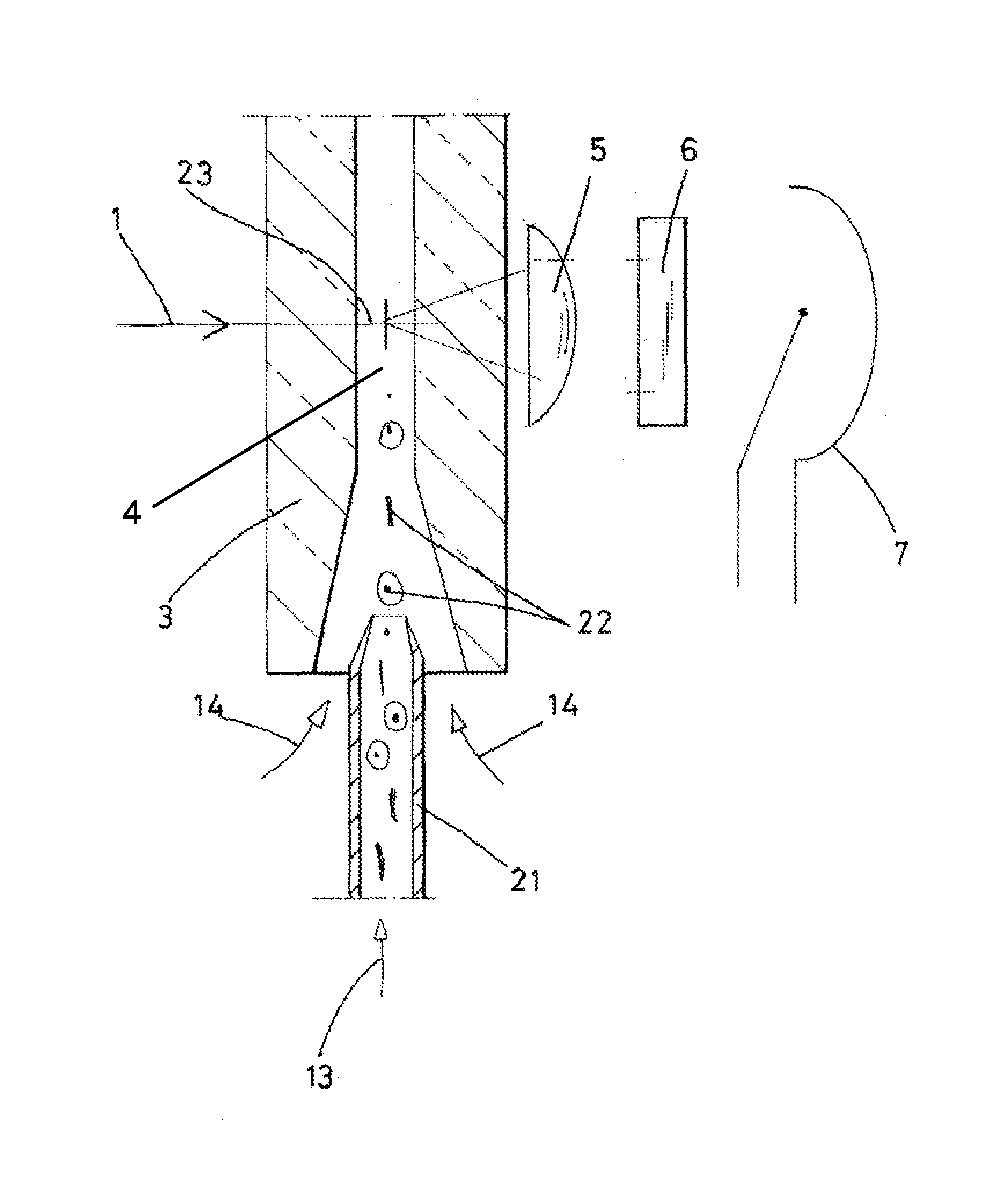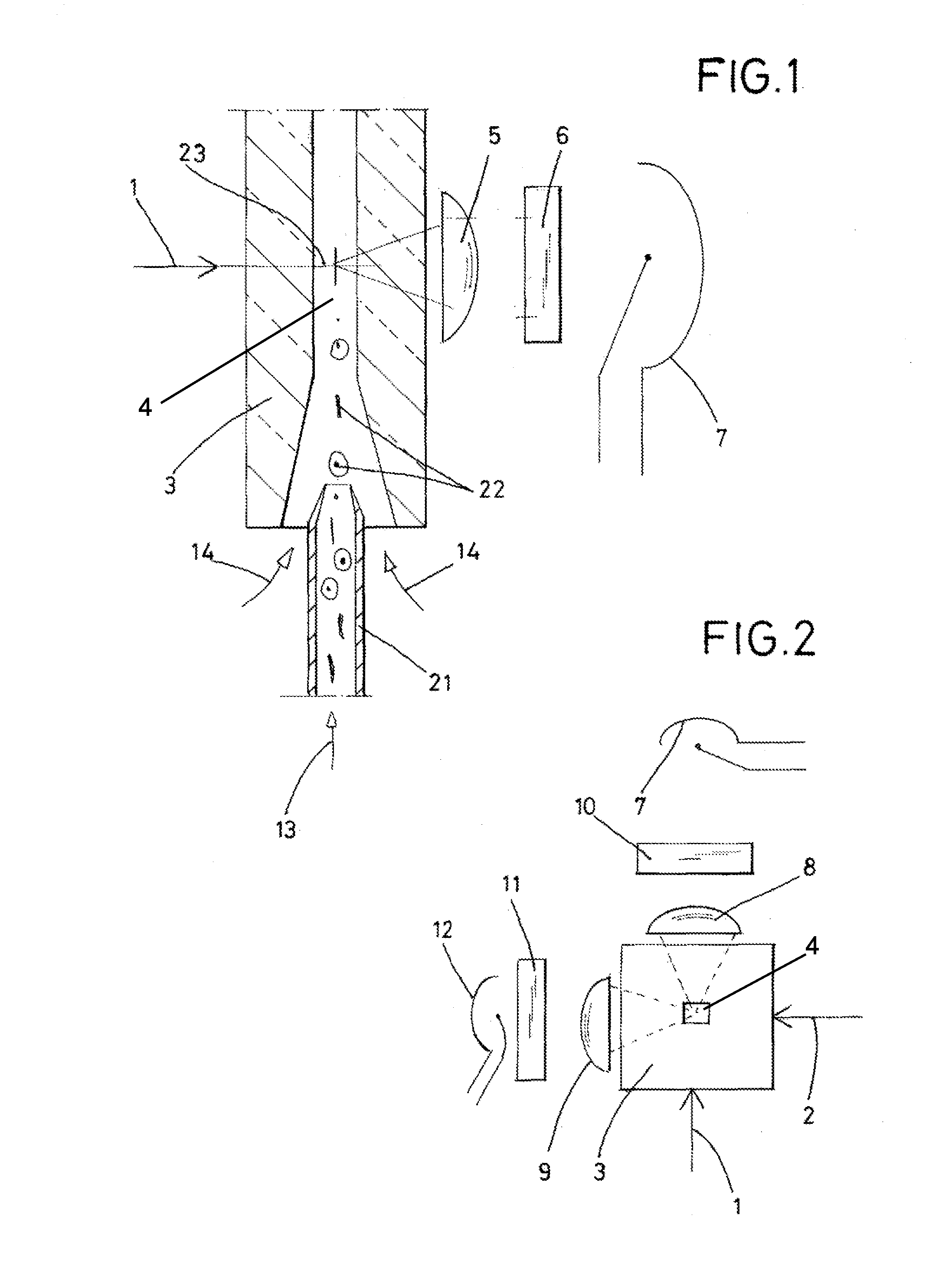Method and apparatus for measuring optical properties of particles of a dispersion
a technology of optical properties and dispersion, applied in the field of cytology, can solve the problems of reducing not allowing the detection of other factors, and making the measurement of particle optical properties more difficult, so as to reduce or completely exclude the influence of form factors on the measurement precision, reduce the effect of form factors and reducing the error of form factors
- Summary
- Abstract
- Description
- Claims
- Application Information
AI Technical Summary
Benefits of technology
Problems solved by technology
Method used
Image
Examples
Embodiment Construction
[0023]FIG. 1 is a schematic cross-sectional vertical cut through the cuvette portion of a flow cytometer, showing a flow channel 4, the excitation beam path, using a laser unit that emits a laser beam 1, and the measurement beam path with light-collecting optics in the form of a collecting lens 5, a laser-light blocking filter 6, and a light-sensitive sensor 7, also referred to as a photodetector. The particle dispersion 13 is fed into the flow channel 4 in the measuring cuvette 3 through a narrow tube 21. A plurality of particles P are shown in the flow channel 4.
[0024]A particle-free medium 14 is fed around the particle stream 13, resulting in a centering of the particles when passing the measuring area at 23. The morphologically different particles have no preferred orientation.
[0025]FIG. 2 and FIGS. 4-6, are schematic illustrations that show a top view or a perspective view of the measuring cuvette 3. These illustrations make clear that, according to the invention, laser photoex...
PUM
| Property | Measurement | Unit |
|---|---|---|
| diameter | aaaaa | aaaaa |
| angle | aaaaa | aaaaa |
| angle | aaaaa | aaaaa |
Abstract
Description
Claims
Application Information
 Login to View More
Login to View More - R&D
- Intellectual Property
- Life Sciences
- Materials
- Tech Scout
- Unparalleled Data Quality
- Higher Quality Content
- 60% Fewer Hallucinations
Browse by: Latest US Patents, China's latest patents, Technical Efficacy Thesaurus, Application Domain, Technology Topic, Popular Technical Reports.
© 2025 PatSnap. All rights reserved.Legal|Privacy policy|Modern Slavery Act Transparency Statement|Sitemap|About US| Contact US: help@patsnap.com



